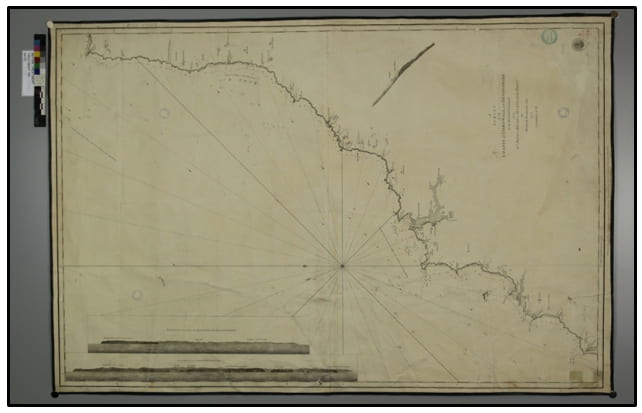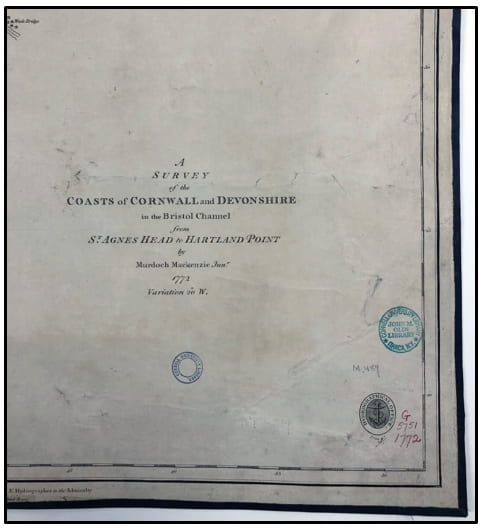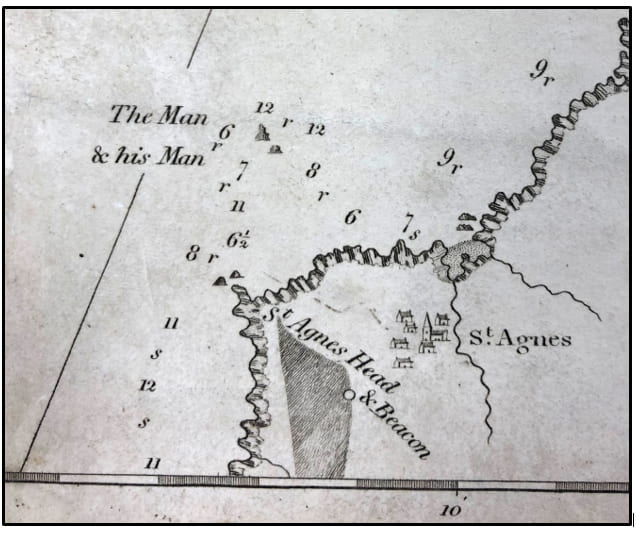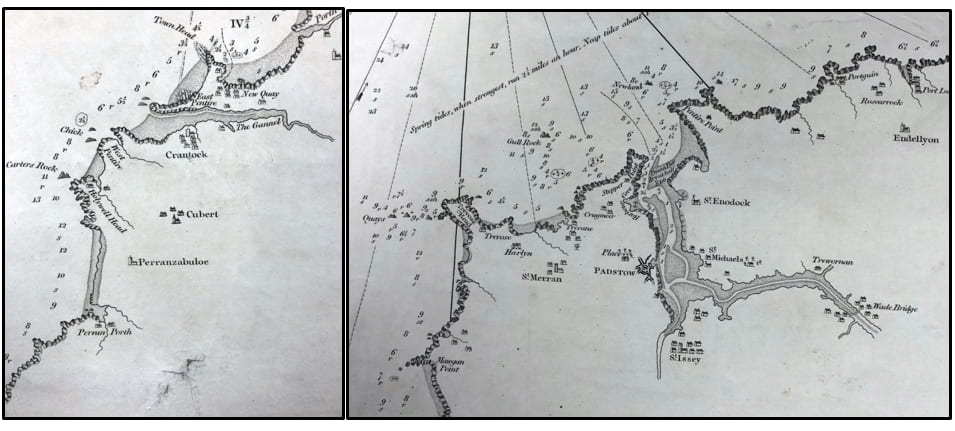The Conservation Lab mentors students interested in library and archives conservation and their conservation projects are great learning opportunities for us all. Margaret Canfield, a Cornell University junior majoring in art history, has been a student employee in our lab for several semesters. Her blog describes the treatment of an early 19th century map.
Margaret Canfield
 In the field of conservation, the history of an object helps inform its treatment. A survey of the coasts of Cornwall and Devonshire in the Bristol Channel from St. Agnes Head to Hartland Point includes interesting additions of mailing labels and postage stamps that form part of its unique history. This map is from the Maps and Geospatial Information Collection, an extensive collection in Olin Library that contains over 650,000 maps. The treatment of this map took the historical evidence of the mailing labels and stamps into consideration and focused on stabilizing areas that were detaching from the cloth backing, to prevent loss of the paper support and media.
In the field of conservation, the history of an object helps inform its treatment. A survey of the coasts of Cornwall and Devonshire in the Bristol Channel from St. Agnes Head to Hartland Point includes interesting additions of mailing labels and postage stamps that form part of its unique history. This map is from the Maps and Geospatial Information Collection, an extensive collection in Olin Library that contains over 650,000 maps. The treatment of this map took the historical evidence of the mailing labels and stamps into consideration and focused on stabilizing areas that were detaching from the cloth backing, to prevent loss of the paper support and media.

The geographic area depicted in the map was surveyed in 1772 by Murdoch Mackenzie and published by the Hydrographical Office in 1810 by Captain Hurd. Hydrography is the science that measures and describes bodies of water and adjoining coastal areas for improved navigation, safety, and efficient transport.

The Man and his Man refer to two small islands north of St. Agnes. Also known as Bawden Rocks and Cow and Calf.
The map was lined overall on the verso with a coarse, sturdy fabric, resembling burlap. The edges of the map were reinforced with dark green ribbon. Because maps at this time would have been working documents—in this case, used and referenced in the study of this geographic area—it was common for them to be made more robust with strong fabric linings and edgings.
 On the fabric lining, there are stamps, labels, and postage marks that reveal a glimpse into the story of the map’s life. A paper stamp on the upper left corner of the verso (shown here on left), and another paper label on the front that covers some original text, indicate the map was sold by James Wyld, the geographer to the King. This could refer to either James Wyld Sr. (1790-1836) or his son James Wyld Jr. (1812-1887), who partnered with him in the family business of cartography.
On the fabric lining, there are stamps, labels, and postage marks that reveal a glimpse into the story of the map’s life. A paper stamp on the upper left corner of the verso (shown here on left), and another paper label on the front that covers some original text, indicate the map was sold by James Wyld, the geographer to the King. This could refer to either James Wyld Sr. (1790-1836) or his son James Wyld Jr. (1812-1887), who partnered with him in the family business of cartography.
A shipping label on the verso (on right, above) shows the map was mailed from James G. Commin to E.J. Bailey, of Eddy St, Ithaca. Commin was a noted bookseller in Exeter, England and there is evidence that he was in possession of maps from Devon and Cornwall from various newspaper ads in The Publisher’s Circular and Bookseller Record of British and Foreign Language Volume LVIII.
The canceled stamp on the verso shows the map was mailed from Commin in 1912 to E.J. Bailey, and arrived postage due. An Ithaca directory from 1912 corroborates Bailey’s address as Eddy Street. E.J. Bailey (Elmer J) got his PhD from Cornell in 1909 and was a professor in English until his leave from the university in 1919. There are no records detailing how the map came to reside in the Maps Collection in Olin Library but it may have been donated by Professor Bailey.
The presence of the many labels and stamps directly on the map’s cloth backing indicate it may have been mailed from Exeter to Ithaca without additional packaging. The map was in good condition considering its age and history of being shipped overseas with just the cloth backing as protection. The map had significant surface dirt on both the recto and the verso. The lining of the map was loose in some areas and detaching from the paper support. The map had two small losses in which the cloth backing was torn completely through. The surface of the map was creased in many locations with several breaks in the paper support. There is evidence of some fold lines, with one prominent fold through the vertical center, which bisects the mailing label. On the bottom left corner of the recto, there was a small amount of glassine adhered to the map; its purpose is unknown. There are four ink Cornell Library ownership stamps on the map’s recto.
Several factors were considered in creating a treatment plan for the map, including: the map was in good condition with only minor issues, the cloth backing was not actively causing concern, and the mailing labels and stamps form an important part of its history. Accordingly, the cloth lining was left intact and the treatment focused on stabilizing the minor condition concerns and providing a protective enclosure.
The treatment consisted first of thorough surface cleaning. The recto was cleaned with cosmetic sponges and then three iterations of vinyl eraser crumbs. The recto was then carefully vacuumed with a HEPA vacuum. The cloth verso was cleaned with a sponge eraser while the labels and postage stamps were cleaned with cosmetic sponges. The verso was also vacuumed. Small areas of lifting of the labels on the verso were pasted down with wheat starch paste. The lifting areas of the paper support were reattached to the cloth backing with wheat starch paste. The glassine was removed using a methylcellulose poultice. The losses and frail areas were mended on the verso using acrylic toned Japanese tissue and wheat starch paste. While the black engraving ink was stable in water, the Library ownership stamps were soluble. So the map was gently humidified using felted Gore-Tex, which is a controlled method that did not disturb the ownership inks. After humidification, the map was dried and flattened between thick blotters and under weight to reduce surface creases and undulations. After treatment, it was sleeved in polyester to protect it in storage and during handling.

Recto and verso of the map in raking light, shown before treatment on the left and after treatment on the right.
This map has such an interesting history, from its assortment of mailing labels and postage stamps, to its connection to Cornell University faculty, and finally as part of the Maps Collection. After treatment that retained its historical evidence, the map is better preserved and available for study–perhaps for a future researcher to discover why Professor Bailey was interested in a hydrographic map of the coast of Cornwall!



